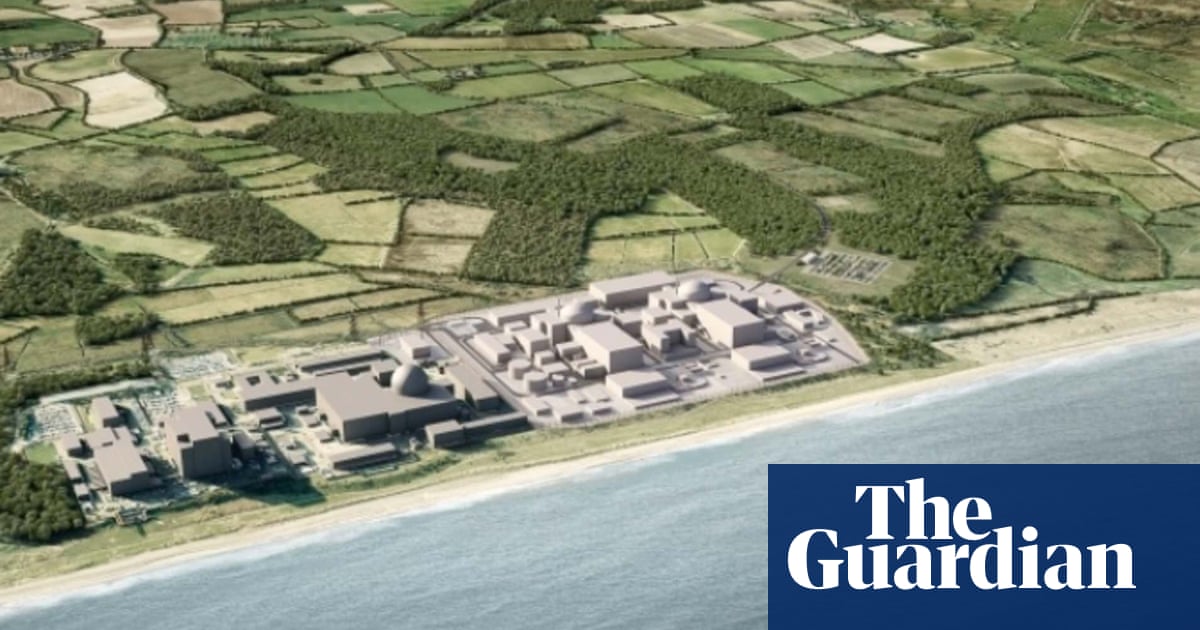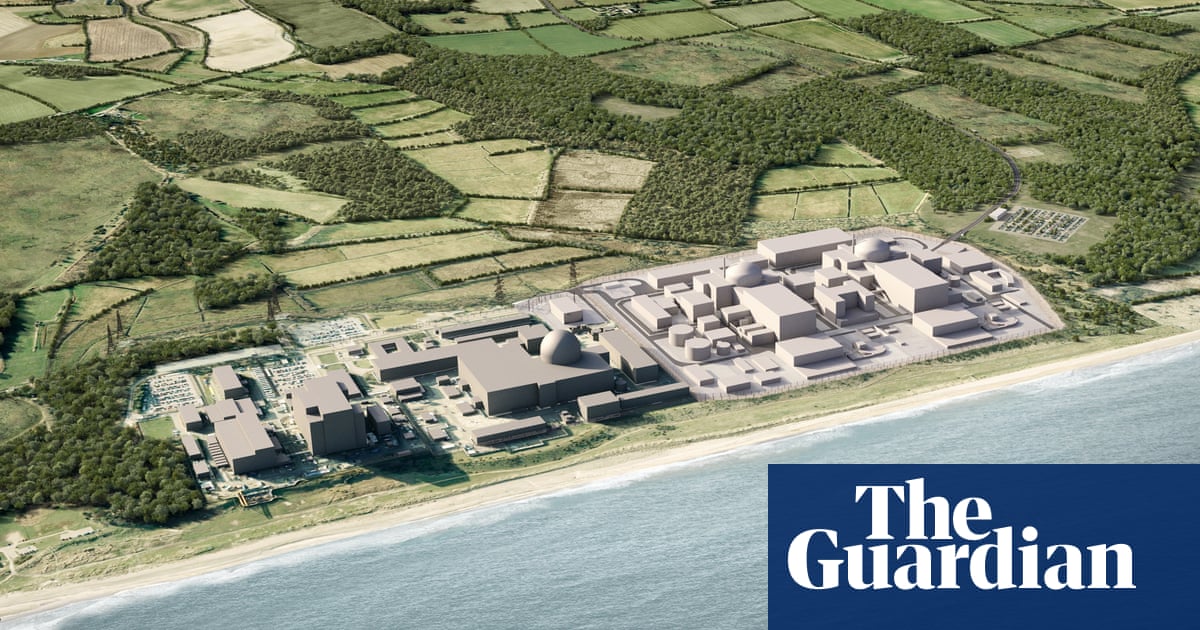
More than 500 million fish, including protected species, could be sucked into the cooling system of a proposed £20bn nuclear power plant in Suffolk if construction goes ahead, environmental campaigners say.
A local campaign group, Together Against Sizewell C (Tasc), claims the subsequent deaths of millions of fish is “inhumane and unacceptable” and flies in the face of the government’s green agenda. Also opposing the development, the bird conservation group RSPB expressed concern over predicted levels of fish loss on the marine birds that feed on them.
The Centre for Environment, Fisheries and Aquaculture Science (Cefas), a government agency, has assessed the marine impacts of the plant and said it was confident the mortality rates caused by Sizewell C would be “sustainable” and the impact on the wider marine community “insignificant”.
EDF, the French state-owned company behind the plan to build Sizewell C, claims the proposed plant could generate 3.2GW of electricity, enough to provide 7% of the UK’s electricity needs, or power 6m homes. The Nuclear Industry Association describes it as “a vital next step” in the UK’s efforts to secure new low-carbon electricity as older nuclear reactors are shut down.
However, environmental campaign groups, including Greenpeace, argue that nuclear reactors are unnecessary and expensive, compared with a combination of renewable energy and battery storage technology. The RSPB and the local community group Stop Sizewell C said the reactor poses a risk to the natural habitats along the Suffolk coast and the adjacent Minsmere nature reserve.
Planning documents published by EDF have revealed that almost 8 million fish were “impinged” – or sucked into the cooling system – by the existing plant Sizewell B each year between 2009 and 2013. Extrapolating from these figures, Tasc has estimated that 28 million fish could be impinged in the cooling system of both plants each year, which is 560 million over the two decades the plants are expected to operate, between 2035 and 2055. The proposed plant is larger than Sizewell B and will take in 2.5 times the amount of seawater, Tasc said.
Pete Wilkinson, the chair of Tasc and a co-founder of Greenpeace UK, said the estimates were “staggering”. Such wildlife loss was the “tip of the iceberg”, he said, as it did not take into account fish fry, eggs, crustacea and other aquatic life.
“Tens of millions of fish, crustaceans and other marine biota will be sacrificed for the purposes of cooling a plant which is not needed to keep the lights on, which will do nothing to reduce global carbon emissions, which will be paid for from the pockets of all UK taxpayers and bill-paying customers, leaving future generations with a lasting legacy of an impoverished environment,” he said.
Wilkinson said he expected Cefas to condemn the impact on fish at the inquiry stage of the Sizewell C planning process.
“Cefas’s stated aim is ‘to help keep our seas, oceans and rivers healthy and productive, and our seafood safe and sustainable … ’ Instead, it seems that Cefas appears quite at ease presiding over the deaths of millions of fish and clearly feels the huge number of fish deaths is acceptable in that the overall health of fish stocks will not be compromised.”
Adam Rowlands, the RSPB’s Suffolk area manager, said: “It is our position that the project should not go ahead. The potential impacts on the environment are too great. Fish impingement is one of our concerns. These fish provide a valuable food supply to rare birds nesting and breeding in the area.”
Protected species breeding in the area include little and common terns and in the winter there are a number of internationally important red-throated divers. “They won’t feed on dead fish,” Rowlands said.
Asked what impact such a loss of fish might have, Rowlands said: “We haven’t seen evidence to convince us that removing that amount of fish from the population wouldn’t have an impact.”
If the plant goes ahead, it will be built on part of Sizewell marshes, a site of special scientific interest. It will also be adjacent to the southern boundary of the RSPB-owned Minsmere nature reserve, a Ramsar (internationally important wetland) site and special protection area. Minsmere is one of only five sites in Britain to receive the Council of Europe European Diploma for protected areas award, whose renewal depends on Sizewell C not causing any damage.
A spokesperson for Cefas said: “There is no scientific evidence that the proposed new nuclear developments will cause large-scale destruction of marine life or impact protected species.”
Its role in relation to the Sizewell C project was to ensure “the marine evidence base is scientifically robust, to fully assess the potential marine impacts and, where feasible, to work with EDF engineers to reduce potential impacts by design optimisation”, the spokesperson said, adding that issuing any objection to the proposal was outside its remit.
“Our objective is to ensure that the adverse impacts of human activities don’t affect the long-term viability of communities, habitats, or populations of vulnerable and declining species.
“Where impacts do occur, such as mortality of fish on power station intake screens, we assess these against other sources of mortality (natural and anthropogenic) and the ability of the population to withstand such losses. Compared to the natural population size, relatively few fish will be impacted and we are confident that mortality rates caused by the new nuclear industry are sustainable and the impact on the wider marine ecosystem will be insignificant.”
It said it had produced three chapters of the environmental statement, including on marine ecology and fisheries, submitted by Sizewell C to the planning process for public and regulatory scrutiny. It added: “In undertaking this nationally important work for EDF to develop UK’s new nuclear capability, we avoid conflicts of interest by not providing advice to government regulators on new nuclear developments.”
A spokesperson for Sizewell C said: “Our assessments show that the fish impacted are mainly sprat and herring. The intake of these species by Sizewell C is 0.01% of the stock in the area. Fisheries scientists describe the impact of new nuclear power stations on the marine ecosystem as ‘insignificant’.”
The spokesperson said they would use a more modern “fish returns system” than the one at Sizewell B, to ensure higher survival rates and that the returned fish that did not survive would be “eaten by other sea life”.
A spokesperson for the Environment Agency said it was responsible for “stringent regulation” of the nuclear industry to prevent harm to the environment and local communities. Speaking about an EDF subsidiary created to build and run Hinkley Point C and Sizewell C nuclear power stations, they said: “We are currently considering NNB Generation Company’s environmental permit application for their proposed cooling water discharge, and will determine it once we have assessed the impacts to the marine environment – including fish populations.”
The Sizewell C planning process began in May 2020 and an examination is now under way by the Planning Inspectorate. This stage of the process is expected to take about six months, during which local people and organisations can make representations.












